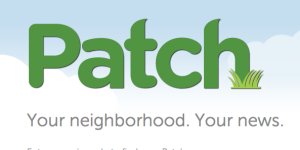Despite High Hopes For Patch, AOL Is Now Winding Down The Hyperlocal News Site
It all started out so optimistic: When AOL’s chief executive Tim Armstrong came onboard from Google, his dream of a network of local news sites that would cover all the comings and goings of communities across the country seemed like it could work out. Patch got $50 million and the high hopes of its fans at AOL in 2009, but now the company says its days are numbered.
Armstrong doesn’t sound like he’s entirely giving up on Patch, notes the New York Times’ David Carr, pointing out that he called it “an asset with optionality” last week.
“Patch has more digital traffic than a lot of traditional players have,” he said in a phone call on Friday, still defending his pet project. “The long-term vision was clear: If you get the consumer, can you get the revenue? And we have a whole bunch of Patches where the answer is yes. But we rolled it out on a national basis and we’ve had to adjust based on the investor commitments that we have made.”
Patch has lost hundreds of millions since it started and laid off hundreds of workers, according to reports, and no matter what happens next, it won’t be what Armstrong envisioned.
That vision was getting the local news to consumers in order to sell local advertising right along with it. And Armstrong wasn’t the only one who believed it could work, a former Patch editor tells Consumerist of the Patch dream.
“I bought into the idea of Patch,” she tells Consumerist. “I drank the Koolaid, and for a long time it was awesome. In the areas I covered, Patch really did seem to make a difference. People loved the daily local news.”
But despite that positivity, she says it soon became apparent as time wore on that AOL saw Patch as a failure, and with that kind of attitude, it was going to fail.
“Those that had championed the product were jumping ship, and that didn’t leave much hope for the rest of us,” she recalls.
Patch isn’t making AOL’s investors any money, and part of that could be because though the product might’ve been right, there just wasn’t enough time — Armstrong had promised investors in May 2012 that he could make it profitable by the end of 2013. We’re there now, and profitablity isn’t in sight.
That short timeline is definitely part of the problem, the former editor tells Consumerist. Basically, it was a nice dream while it lasted, but it needed more time.
“I think Patch was given a small window in which to succeed, but with rushed expansions and a deadline to be profitable, it wasn’t an adequate amount of time,” she says. “The idea of Patch was great and something a lot of people could get behind. However, the execution is beyond disappointing.”
While Patch is on its last legs, it’s not over until Armstrong says it’s over. And as of Friday, he still insists it’s “moving toward” profitability with new partnerships.
“At the end of the day, could Patch have been run better? We don’t know,” he said. “We were doing this while we navigated turning around the rest of the company. Patch was one of the big bets that we made, among others, and I still believe local will be a big opportunity whether it is Patch or someone else.”
AOL Chief’s White Whale Finally Slips His Grasp [New York Times]
Want more consumer news? Visit our parent organization, Consumer Reports, for the latest on scams, recalls, and other consumer issues.


